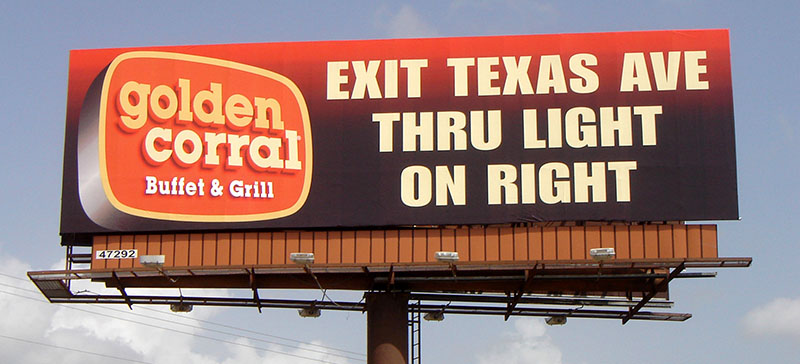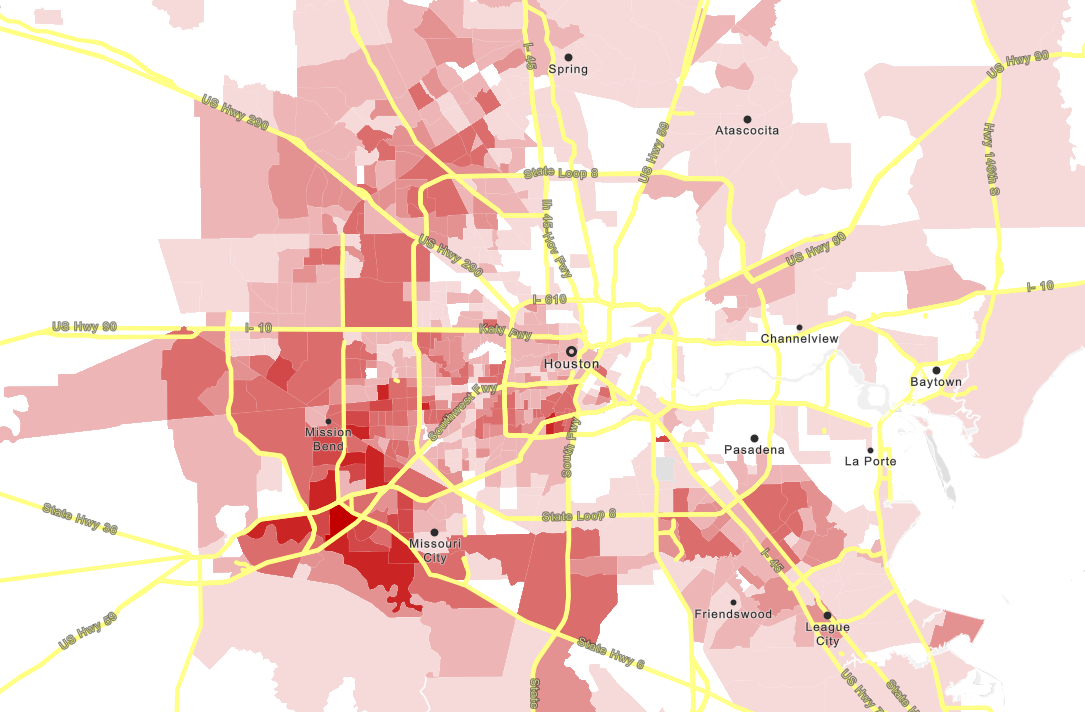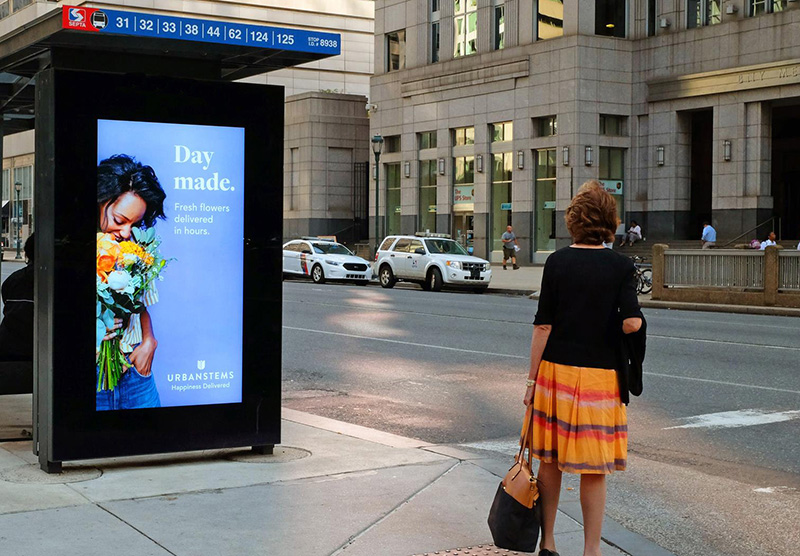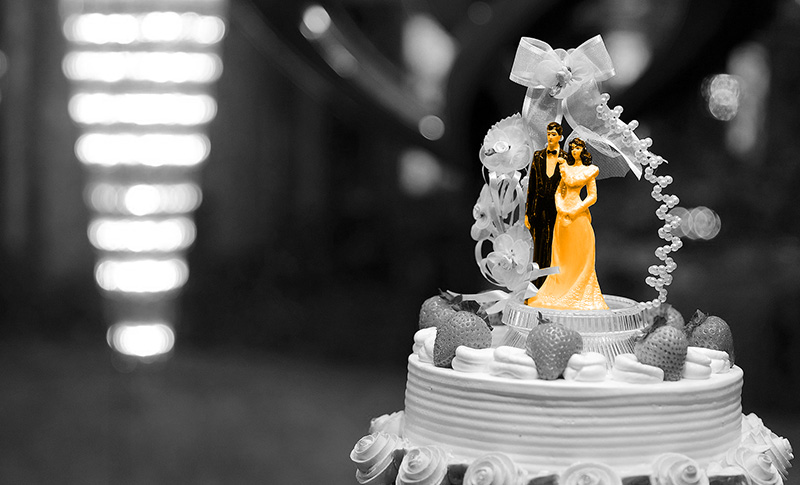Think of a wedding cake – close your eyes and picture it in your mind. It probably has several tiers, each one getting a little bit smaller as you move up – right? It turns out that wedding cake is a pretty good model for the evolution of Out of Home media planning. If you haven’t been paying close attention, you may think OOH is still planned the way it was 20 years ago, but nothing could be farther from the truth.
Starting from a base of broad, market wide coverage, additional layers of information and technology have been added on top, each one building on the last, becoming more tightly focused.
Directional Media & Brand Awareness – The Original Out of Home Plans
Early on, Out of Home Media served 2 main purposes – directional and brand awareness, both of which covered broad swaths of the population and market. General brand awareness is the simplest – if your product or service is something of interest to a broad range of the population you can raise awareness with large scale, market-wide coverage. With its low cost, OOH can help drive awareness very efficiently.
In the early part of the 20th century billboard advertising saw huge growth. This was largely fueled (pun intended) by the growth of the interstate highway system, and the increase in the percentage of the population that owned cars.
America was on the move. They needed food, lodging, and gasoline – but without smart phones and the internet to provide instant search access they needed a source of information in unfamiliar territory. Enter billboards. The original Out of Home media provided these travelers with the information about all the goods and services they needed. This was the foundation of the OOH wedding cake – the broad, solid base to build on. It was simple, direct and effective, and provided a strong basis for the future.

Now, while a one layer cake may not be terribly impressive, this strategy is still effective today. America is travelling more than ever – over 1.1 billion trips per day according to the US Bureau of Transportation Statistics. Particularly for those categories where the path to purchase is important – restaurants, retail, etc – well placed, directional Out of Home is still an excellent choice. It can still deliver a message in those all-important last minutes before a purchase decision.
And broad coverage to build brand awareness across a market area is still an important part of the sales funnel, which OOH can accomplish at a low CPM compared to other media.
Demographic Targeting – Out of Home Reaches Specific Audiences
With the introduction of computers into the business world of the 80’s-90’s the data available for planning media, and the expectations of advertisers began to change. The landscape for planning Out of Home expanded beyond its local confines to a regional & national level.
This is the next layer of the cake – now we are starting to add some substance. One of the main pieces of information that became available via new technology was relatively easy access to census data, and demographic maps. This allowed Out of Home to become a much more targeted media. Advertisers could use maps to determine where in a market their target demographic lived. These pockets could be used to help inform Out of Home media placement. Arterial roads and transit in and out of those areas provided an efficient way to reach that audience as they moved to and from home. Malls and other retail in close proximity were more likely to be used by the consumers in that area.

Much like directional media – demographic targeting can still be very effective as part of an Out of Home media plan. If your trying to reach an affluent audience in Seattle, the Asian community around Houston, or single parents in Cleveland, demographic data will give you a good view of where to focus your efforts based on the audience home location. The result is a plan that is more focused, efficient and cost effective.
Looking Ahead to Behavioral Out of Home Planning
As Out of Home planning continues to evolve it’s becoming increasingly apparent that the top layer of the cake, the most focused layer of targeting will come courtesy of the nearly universal dependence on our smart phones. It’s also clear that this top level is going to be the tastiest.
These devices are providing enormous amounts of data about our daily activities, our travel, our interests, our location, and our behavior. It is taking the paradigm of demographic planning and multiplying it by a thousand. This audience segmentation data can be combined with media data, geographic data, traffic and weather data and more to provide a view of the audience in the market that is based on a holistic view of the consumer behavior in that market.
This allows marketers to plan media not just based on where someone lives, but on where they go – how they move through the market during their daily lives. It also allows for a much more specific level of audience segmentation. We’ve moved past just “HHI” or “African American” to “18-24, male, outdoor enthusiast, who is shopping for a car”. Out of Home will soon be planned with levels of specificity on par with digital, and with the added component of real world geographic data.

We are still in the early stages of the development of this new Out of Home paradigm, and the growth of digital media, new platforms to analyze the data, and deliver creative will continue to change in the future. New media formats and real-time audience delivery will allow for a fully integrated Out of Home model that can reach very specific audiences, with creative specifically designed for them, at most the effective time.
The future promise of Out of Home targeting moves to the very top of the cake – the happy couple perched at the pinnacle. As the flow of data becomes real-time planning, targeting and delivery will merge into one seamless flow, focused on that couple at the top – the audience.

It’s important to remember that as Out of Home planning has evolved, the previous methodologies have not lost their effectiveness. Each layer of the cake is still just as delicious – directional boards can still drive traffic to restaurants, demographic targeting can still put you in the right neighborhood. But each new layer has added focus and flexibility to the planning model – allowing marketers to choose the right model for the client’s needs.


![Finding My Outdoor Voice in Out of Home [Intern Spotlight]](https://www.emcoutdoor.com/blog/wp-content/uploads/2018/11/header-1.jpg)


